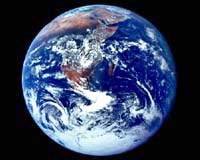
 |
An international protection commssion was set up in 1994 and pollution in the river - Europe's second after the Volga -- has fallen back to its lowest levels since the early 1980s, according to commission chief Philip Weller.
A major mover of freight, the Danube links the South to the North of Europe through the Main-Danube Canal.
However, critics warn the most romantic river of Europe has perhaps become the most polluted and its ecosystem is threatened unless serious management plans are applied by all Danube countries.
Industry and mining are responsible for most of the discharges of hazardous substances. The increased amount of nutrients in the water causes high levels of nitrate in drinking water.
Furthermore, the agricultural sector contributes largely in the load of nitrogen and phosphorus in the Danube, and transport is an important source of oil pollution and lead contamination.
Measures taken to clean up the river include greater control over nitrates and phosphate waste from agricultural fertiliser and greater use of purifying plant for drains.
Following a pollution catastrophe in 2000, Romania has started building purifying plants for used water in the country's five major ports served by the Danube.
Philip Weller, executive secretary of the International Commission for the Protection of the Danube River (ICPDR) said: "We have established a transnational monitoring network to evaluate the water quality of the Danube and an accident early warning system that notifies downstream countries içn the event of accidental pollution."
Experts say the mighty river has also benefited from closure of huge state-run plants causing heavy pllution in former communist countries.
But Weller says the admission to the European Union of Danube basin countries including the Czech Republic, Hungary, Slovakia and Slovenia and the expected later admission of Croatia, Bulgaria and Romania could renew pollution:
"The expected economic upsurge must not be at the expense of the environment," he warned.
The Danube flows 2,850 kilometers (1770 miles) through nine countries from Germany to the Black Sea.
It is now restoring its key role as a transport system, heavily curtailed by war in former Yugoslavia including the destruction by NATO bombers of Serbian bridges.
The European Union Commission in Brussels is also seeking a boost to Europe's river traffic, but ecologists warn of the dangers.
Ulrich Eichelmann, a river expert with the World Wildlife Fund (WWF) in Austria, said: "EU enlargment means increased use of the Danube as a transport system with a risk of desertification of surrounding countryside, the disappearance of flora and fauna, and an increased danger of flooding."
Riparian countries also want to develop river tourism on the Danube with cruise ships.
DDSG, an Austrian shipping company operating five vesels on the Danube says the number of its passengers has gone up from 10 to 15 percent in the last 10 years.
The Croatian port of Vukovar, a victim of war between 1991 and 1995, received its first cruiseboat-load of US tourists in April.
The Danube rises in the Black Forest Mountains of Germany, and empties in the Black Sea on the Romanian coast. It flows through Germany, Austria, Slovakia, Hungary, Croatia, Serbia, Bulgaria, Romania, and Ukraine.
Freight transport, hydroelectricity, water supplies, irrigation, and fishing all play important roles.
TERRA.WIRE |